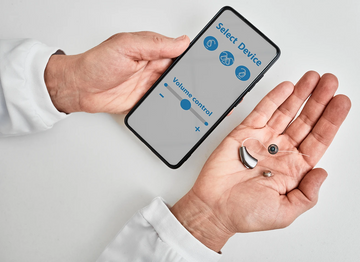Aging comes with more doctor appointments, but not all of your symptoms of change have to manifest visually right away. Most medical clues appear in everyday life long before they become medical crises.
By paying attention to details such as your earwax color, the way you sleep, and even the rigidity of your joints in the morning, you can take a more active role in your own health.
Self-testing is not a replacement for medical care, but it can help you take a more active role in your health.
Small changes with the right equipment, like supportive shoes or adjustable beds to make the older person comfortable, can make a significant difference in keeping older individuals independent, safe, and healthy at home.
Why Daily Self-Checks Matter for Aging Adults
Getting older doesn't mean surrendering independence. One of the most effective ways to remain resilient is to monitor minor yet crucial daily health indicators.
Something as minor as paying attention to a new ache or noticing how the color of earwax shifts over time provides crucial information on hydration, diet, or other conditions.
Self-monitoring enables you to identify issues early. These daily observations encourage a proactive attitude, which helps you make minor lifestyle changes toward wellness.
Most Americans want to "age in place," with home technology playing a significant role. Aside from personal observation, using smart watches to track heart rate or adjustable beds for elderly comfort can give you more control over your well-being.
The Science Behind Monitoring Small Health Clues
The body sends smaller warning signals before serious symptoms occur. The Centers for Disease Control and Prevention (CDC) reports that most chronic diseases, such as diabetes and cardiovascular disease, progress stealthily over many years.
Tiny differences, such as chronic fatigue, changes in skin color, or swelling, may indicate changes in your health condition. Self-checks aren't substitutes for a diagnosis, but they can warn you when it's time to make an appointment.
Self-Checks vs. Medical Exams
Remember to draw a line between self-checks and medical exams. Self-checks are routines you control daily, like watching, recording, or making minor adjustments in your life.
They are not a substitute for blood work, imaging, or other diagnostic tests, but they serve as an early warning system. Consider them as the first step in an ongoing dialogue with your physician.
Earwax, Hearing Changes, and What They May Indicate
Your ears are smarter than you think. They often give clues to the state of your hearing every day.
Earwax as a Health Signal
Some may ask, what does your earwax color mean? Shifts in texture or shade can sometimes indicate infections, hydration levels, or other health factors, making monitoring these small details all the more useful.
Healthy earwax is light yellow to dark brown, soft, and ever-so-slightly sticky.
Dry, flaky wax may indicate low hydration levels or genetic differences. Pale, watery wax may indicate an ear infection or excessive moisture in the ear. Any abnormal changes in color, odor, or texture must be reported.
When It's Time to See a Professional
While earwax provides natural protection for the ear canal, excess buildup could result in discomfort, muffled hearing, or dizziness. Avoid using cotton swabs, as they can push the earwax deeper and cause clogging.
Check for common red flags, such as pain, unexpected hearing loss, ringing in the ears (tinnitus), or drainage. A practitioner will need to medically check and safely remove these.
Hearing Loss Awareness
Gradual hearing loss with age is inevitable, but it has risks beyond missing conversations. Hearing loss has been associated with social isolation, memory problems, and even an increased risk of falling.
That is why it's best to detect early changes, such as turning up the TV so that you can hear it louder than normal.
Sleep Quality as a Window into Overall Health
How well you sleep at night is often tied to how well your body and brain function during the day.
Why Sleep Matters More With Age
Sleep quality is an excellent indicator of your overall health. The National Institutes of Health (NIH) estimates that older people require seven to nine hours of sleep, but many don't get it.
A good night's sleep is essential for maintaining memory, balance, immune response, and overall mood. Poor sleep can leave you feeling tired and vulnerable to falls, infections, and impaired cognitive function.
Signs to Watch at Night
-
Frequent waking: Could point to sleep apnea, urinary issues, or cardiovascular conditions.
-
Snoring: Often overlooked, but can be a sign of airway blockage or sleep apnea.
-
Morning stiffness: Waking with sore joints may suggest arthritis, poor posture, or an unsupportive mattress.
These signals are more than minor annoyances. They indicate how well your body functions and recovers overnight.
Supportive Tools for Better Sleep
With the proper setup, a comfortable and restful sleep is attainable. Supportive pillows, well-ventilated mattresses, and a quality mattress are must-haves.
Adjustable sleeping arrangements are also helpful to most older adults. An adjustable bed facilitates circulation, alleviates acid reflux, and releases pressure on painful joints.
These features extend beyond comfort for older adults, since they provide independence through easy ingress and egress from bed safely.
Joint Discomfort and Mobility Red Flags
Your joints are like dashboard warning lights, flashing a message when it is time to monitor your movement and strength more closely.
Why Joints Tell the Story of Aging
Joints are among the first to show signs of aging. Stiffness, swelling, or strange creaking sounds may indicate arthritis, inflammation, or overuse.
Although these symptoms might not initially appear significant, neglecting them will result in limited motion and increased fall risks.
Daily Self-Checks for Joint Health
-
Can you get up from a chair without using your arms?
-
Do you notice limping or favoring one side when walking?
-
Are stairs becoming harder to climb than before?
These are everyday observations that double as mobility check-ins.
Simple Home Adjustments
If you start having mobility issues, small changes can help:
-
Supportive, cushioned footwear for joint protection.
-
Installing handrails in key areas like bathrooms and stairways.
-
Using canes, walkers, or other mobility aids for safety.
Being proactive does not involve losing independence. It involves adjusting your environment to suit your body's evolving needs.
Vision and Skin as Everyday Health Indicators
Vision and skin changes are often outward signs of more internal health issues.
Vision Changes
Eyes often reveal more than weakening eyesight. If you experience haloes when looking at lights, trouble reading, or a gradual lag in adjusting to light, these may be signs of cataracts or glaucoma.
Close one eye when the other is open and attempt to see clearly—this is a simple home test you can perform on yourself.
Skin Health
Your skin is a daily health report. Slow healing of cuts can be a sign of circulation or diabetes problems. Unusual moles or spots can be a sign of skin cancer vulnerability.
Dryness or color shifts can be signs of dehydration or circulation problems. A glance in the mirror a few times a week can be worth it.
Conclusion
You don't need a doctor's degree or a trip to the doctor's office to notice the clues your body sends you every day. These clues reveal things about your health, from the color of your earwax to how long it takes you to drag yourself out of bed in the morning.
Self-checking gives you back some control. By monitoring earwax, sleep, exercise, eyesight, and mood, you can detect changes before they become major issues.
Combine these habits with regular check-ups and supportive tools, such as adjustable beds, and you'll create a safer, healthier environment for aging well at home.






![Linner Mercury Clarity OTC Hearing Aids [FSA & HSA Eligible] Linner](http://www.linnerlife.com/cdn/shop/files/Linner-Mercury-Clarity-OTC-Hearing-Aids-_FSA-_-HSA-Eligible_-Linner-110038953.webp?v=1725853434&width=360)

![Linner Mars OTC Hearing Aids [FSA & HSA Eligible] Linner](http://www.linnerlife.com/cdn/shop/files/Linner-Mars-OTC-Hearing-Aids-_FSA-_-HSA-Eligible_-Linner-110039213.webp?v=1725865495&width=360)
